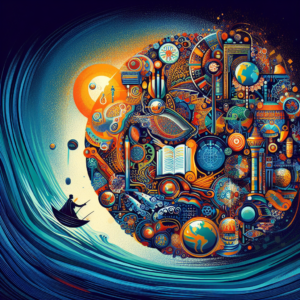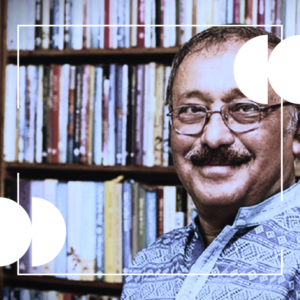
More than a week has passed since Articles 370 and 35A of the Indian constitution have been scrapped by the Narendra Modi-led BJP government. The complete communication lockdown in Kashmir, imposed in the wake of the abrogation, is still in place; curfew is yet to be lifted in some places; leaders are still under house arrest or detained; and thousands of soldiers are deployed on the streets of an already highly militarised zone. Kashmiris are protesting and expressed their dismay at the “betrayal of trust”. Article 370 granted special status and limited autonomy to Jammu and Kashmir since 1949, and Article 35A provided the state the authority to define “permanent residents” and grant special rights to permanent residents of J&K, including employment and acquisition of immovable property in the State. The J&K is now bifurcated into two states and has been brought under the control of New Delhi. While Prime Minister Narendra Modi has described the revocation as “unshackling of Kashmiris”, Kashmiris are witnessing shackles all around them. The “psychological attachment” of the Kashmiris with India has been severely damaged, perhaps shattered for the foreseeable future. The impact of this will be felt throughout the country and region, and in the years to come.
The legality of the abrogation, especially the process of it, is questionable. It will be tested in the Supreme Court, sooner or later. Changing the requirement of concurrence of the “constituent” assembly to “legislative” assembly, and in the absence of the legislative assembly, using the governor as the proxy, may not be considered legal. Since 1959, at least four times, the courts have said that Article 370 is permanent. The unilateral decision of scrapping the Articles is symptomatic of the authoritarian bent of the Modi government.
The economic rationale for the revocation, that Article 370 was a roadblock to development, does not stand the test of the facts, for there are many other states which perform worse than J&K. In terms of the Human Development Index, 18 states are worse than J&K; in terms of the poverty rate (10.35 percent), it is well below the national average (21.92 percent) and 21 states fare worse. The logic behind singling out restrictions on land ownership for outsiders in J&K as a reason for “underdevelopment” falls flat if one looks at Himachal Pradesh and Bihar—the former has outperformed the other states in economic and social indicators, despite being hostile to outsiders wanting to acquire land there, while Bihar stands exactly on the opposite end of the continuum.
The BJP has never concealed its plan to scrap Articles 370 and 35A. It promised the abolition in its 2014 election manifesto, with a caveat—that it will “discuss this with all stakeholders.” In 2019, the caveat disappeared; it was a plain and simple promise of getting rid of Article 370. Modi and his righthand man Amit Shah have made good on their promise. As reported in the Hindustan Times on August 6, “preparations for scrapping Article 370 began simultaneously with the drafting of the manifesto for the 2019 general elections.” That explains the absence of the consultation provision in the manifesto.
Anyone familiar with the ideological position of the BJP will be able to understand that it is about creating a homogenous Hindu India, the mainstay of the Hindutva creed. The Muslim majority state of J&K with special status is a barrier to this agenda. The attacks on Muslims in the name of cow protection over the past years, promotion of the “Jai Sri Ram” chant, exclusionary citizenship in the garb of NRC, and the revocation of Article 370 are not separate events; instead they are intrinsically connected.
The belligerent-exclusionary ultra-nationalist agenda of the BJP has never been restricted to only rhetoric when it came to the issue of J&K. After the Pulwama attack, in the name of patriotism, the BJP and its fountainhead Rashtriya Swayamsevak Sangh have drawn the line in the sand. The bifurcation between the “patriot Indians” and the “enemy within” was done by the Sangh Parivar a long time ago, the physical bifurcation of J&K is only the latest addition. Homogenisation of India, which once took credit in its diversity, and changing the demographic makeup of J&K are not hidden agendas of the BJP. Removal of Article 35A will help achieve both, at once. This is a classic case of “settler-colonial project”, akin to Israel’s long-term approach towards Palestine. This will send a message to the rest of India too.
There is no denying that the ideology of Hindutva is the principal driver, but what remains to be asked is: why now? What prompted the timing?
There are both domestic and external factors that are likely to have played roles in determining the timing. The dramatic victory in May has given the BJP and Modi the audacity to make a drastic move before their support among Indian citizens begins to decline. The BJP felt that it should make use of the energy of its base supporters to confront the criticisms, and cash in on the saffron patriotism which came to the fore in the wake of the Pulwama attack and Balakot air strike. The move will further galvanise the support base, which may well be needed as soon as the Ram Janmabhoomi-Babri Masjid land dispute case in the Supreme Court comes to an end. A five-judge constitution bench headed by Chief Justice Ranjan Gogoi began the hearing on August 6.
The second factor is that the J&K legislative election is expected to be held in October. Except securing a BJP majority in the legislative assembly, there is no way that the J&K Assembly will consent to the removal of Article 370. Therefore, it became a priority for the Modi government.
The disarray of the opposition, particularly the leaderless and rudderless state of Congress even three months after their defeat, has indeed helped the BJP to take the risk with some confidence. It wanted, and succeeded too, in further fragmenting the opposition. Aam Aadmi Party (AAP), Bahujan Samaj Party (BSP), Biju Janata Dal (BJD), Telegu Desam Party (TDP), AIADMK and YSR-CP extended their support. Congress itself has faced some dissension within as Jyotiraditya Scindia extended his support to the Centre.
In addition to these domestic factors, external factors, particularly the ongoing negotiations between the Taliban and the United States, being held in Doha, have played a key role in determining the timing. As reported by the Hindustan Times on August 6, the potential success of the negotiations and the consequent withdrawal of US forces from Afghanistan have made India concerned. It is argued that if the Taliban receive a share of power in Kabul, it will be able to redirect its resources towards other places in the vicinity, particularly in J&K. Indian analysts insist that “the free mujahideen of Afghanistan after the end of the war can be directed to Kashmir with the active help of Pakistan.” US President Donald Trump’s recent comment that Modi has asked him to mediate on the Kashmir issue, which the Indian government unequivocally denied, is considered by some analysts as a trigger for immediate action. Trump’s comment, particularly coming after his meeting with Pakistani Prime Minister Imran Khan, caused concerns among Indian policymakers; most importantly, it was viewed as a step towards internationalisation of the Kashmir issue, contrary to the Indian government’s position, irrespective of which party is in power.
Despite these proximate factors, it would do well to bear in mind that the Hindutva ideology and exclusionary hyper-nationalism blended with authoritarianism is at work here. Therefore, J&K is not the last stop in Modi’s journey towards implementing the RSS’ vision of “new India”.
The Daily Star, 16 August 2019






